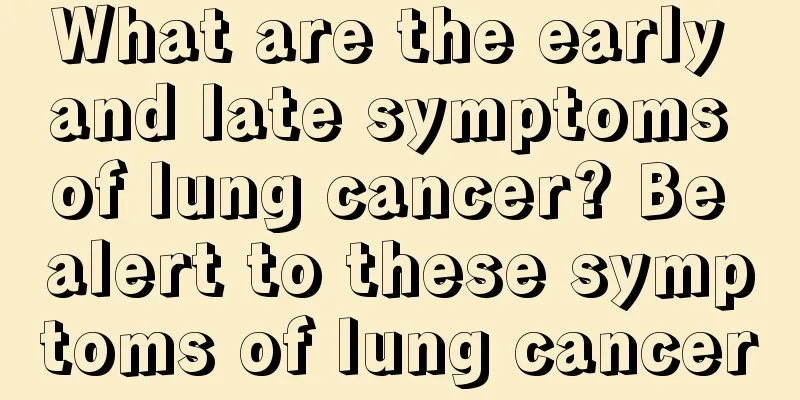What are the symptoms of myocardial infarction?

|
Myocardial infarction is actually a highly prevalent disease. In the past, this disease mainly occurred in the elderly. However, in recent years, more and more young people have also suffered from myocardial infarction. This is mainly related to their living habits or working hours. Long-term heavy workload can easily lead to physical illness. Patients with myocardial infarction generally experience symptoms of irritability and sweating. Clinical manifestations About half of the patients with acute myocardial infarction have prodromal symptoms 1 to 2 days or 1 to 2 weeks before the onset of the disease. The most common ones are aggravation of existing angina pectoris, prolonged attack time, or decreased response to nitroglycerin; or sudden onset of prolonged angina pectoris in those who have never had angina pectoris in the past. Typical symptoms of myocardial infarction include: 1. Sudden onset of severe and persistent squeezing pain behind the sternum or in the precordial area Rest and sublingual nitroglycerin cannot provide relief and are often accompanied by irritability, sweating, fear, or a sense of impending death. 2. A small number of patients have no pain The initial symptoms are shock or acute heart failure. 3. Some patients experience pain in the upper abdomen It may be misdiagnosed as acute abdomen such as gastric perforation and acute pancreatitis. A small number of patients experience pain in the neck, mandible, pharynx and teeth, which can be easily misdiagnosed. 4. Mental disorder Can be seen in elderly patients. 5. Systemic symptoms Indescribable malaise and fever. 6. Gastrointestinal symptoms Symptoms include nausea, vomiting, abdominal distension, etc., which are more common in patients with inferior wall myocardial infarction. Acute myocardial infarction occurs suddenly and should be detected and treated early, with strengthened pre-hospitalization treatment. The principles of treatment are to save the dying myocardium, reduce the area of infarction, protect heart function, and deal with various complications in a timely manner. 1. Monitoring and general treatment Patients without complications should stay in bed for 1 to 3 days during the acute phase; receive oxygen; and undergo continuous ECG monitoring to observe changes in heart rate, heart rhythm, blood pressure, and respiration. For patients with hypotension or shock, monitor capillary wedge pressure and venous pressure when necessary. Low salt, low fat, eat small meals frequently, and keep bowel movements regular. After 3 days, patients without complications gradually transitioned to sitting in a chair next to the bed to eat, urinate, and move around indoors. Patients can usually be discharged from the hospital within 2 weeks. For patients with heart failure, severe arrhythmias, hypotension, etc., the bed rest time and discharge time need to be extended as appropriate. 2. Sedation and pain relief Small doses of intravenous morphine are the most effective analgesic; pethidine can also be used. Those who are irritable and nervous can be given diazepam (Valium) orally. 3. Adjust blood volume Establish intravenous access as soon as possible after admission, and slowly replenish fluids in the first 3 days, paying attention to the balance of intake and output. 4. Reperfusion therapy to reduce infarct area Reperfusion therapy is the main treatment measure for acute ST-segment elevation myocardial infarction. Opening the blocked coronary artery and restoring blood flow within 12 hours of onset can reduce the area of myocardial infarction and reduce mortality. The earlier the coronary artery is reopened, the greater the benefit to the patient. "Time is myocardium, time is life." Therefore, a diagnosis must be made as soon as possible for all patients with acute ST-segment elevation myocardial infarction, and a reperfusion therapy strategy must be developed as soon as possible. |
<<: What are some tips for using honey at home
>>: What are the symptoms of Still's disease?
Recommend
What is causing the pain in the left lower abdomen?
Due to their special physiological structure, wom...
Symptoms of telogen effluvium
People lose some hair when they comb their hair e...
Do the calories in cherry tomatoes help lose weight?
Cherry tomatoes are actually smaller tomatoes tha...
What is the cause of burning sensation in the urethra? It turns out this is what causes it
Burning in the urethra is a condition that has oc...
Being lazy at this time can lead to four serious illnesses
1. Bladder cancer caused by not being able to go ...
What's going on with blood on toilet paper?
If there is blood on the toilet paper during bowe...
What kind of running shoes are good
Many people like to run during the day and at nig...
Neuralgia behind the ear
People clean their ears every day when they wash ...
Side effects of ultraviolet light therapy device
Many people don’t know much about ultraviolet lig...
What is the cause of snake gallbladder sore and what are the symptoms
Snake gall bladder sore is a skin disease caused ...
The organs corresponding to acne on the face
In fact, there are many places where acne can app...
Parents' smoking significantly increases children's risk of certain cancers
What is the cause of lung cancer? In modern socie...
What are the symptoms of myocardial damage?
Myocardial damage is actually a very common heart...
Basic principles of radical gastrectomy for gastric cancer
The basic principles of radical gastrectomy for g...
There are so many dangers of lip micro-plastic surgery!
Some girls always think that their lips are not b...









